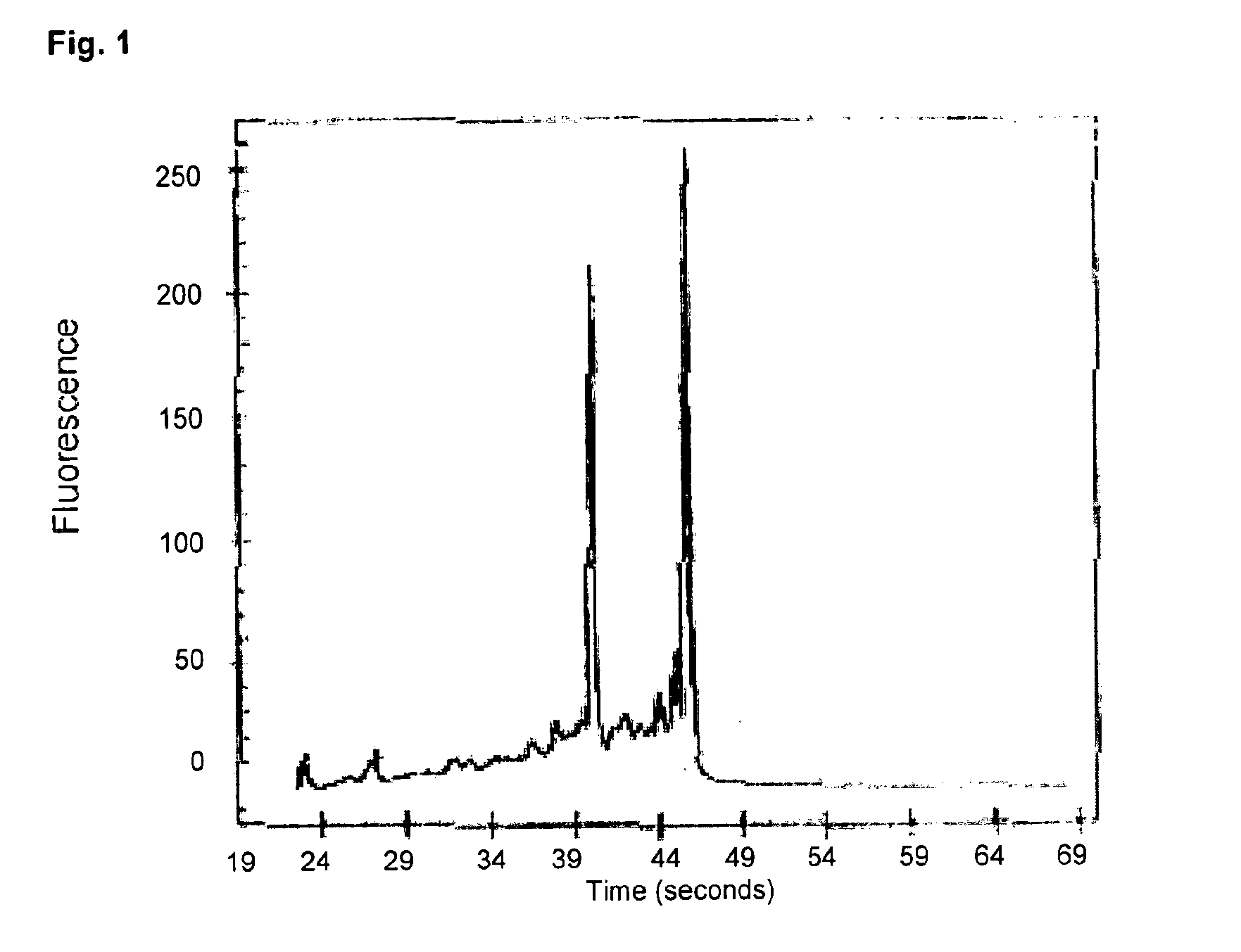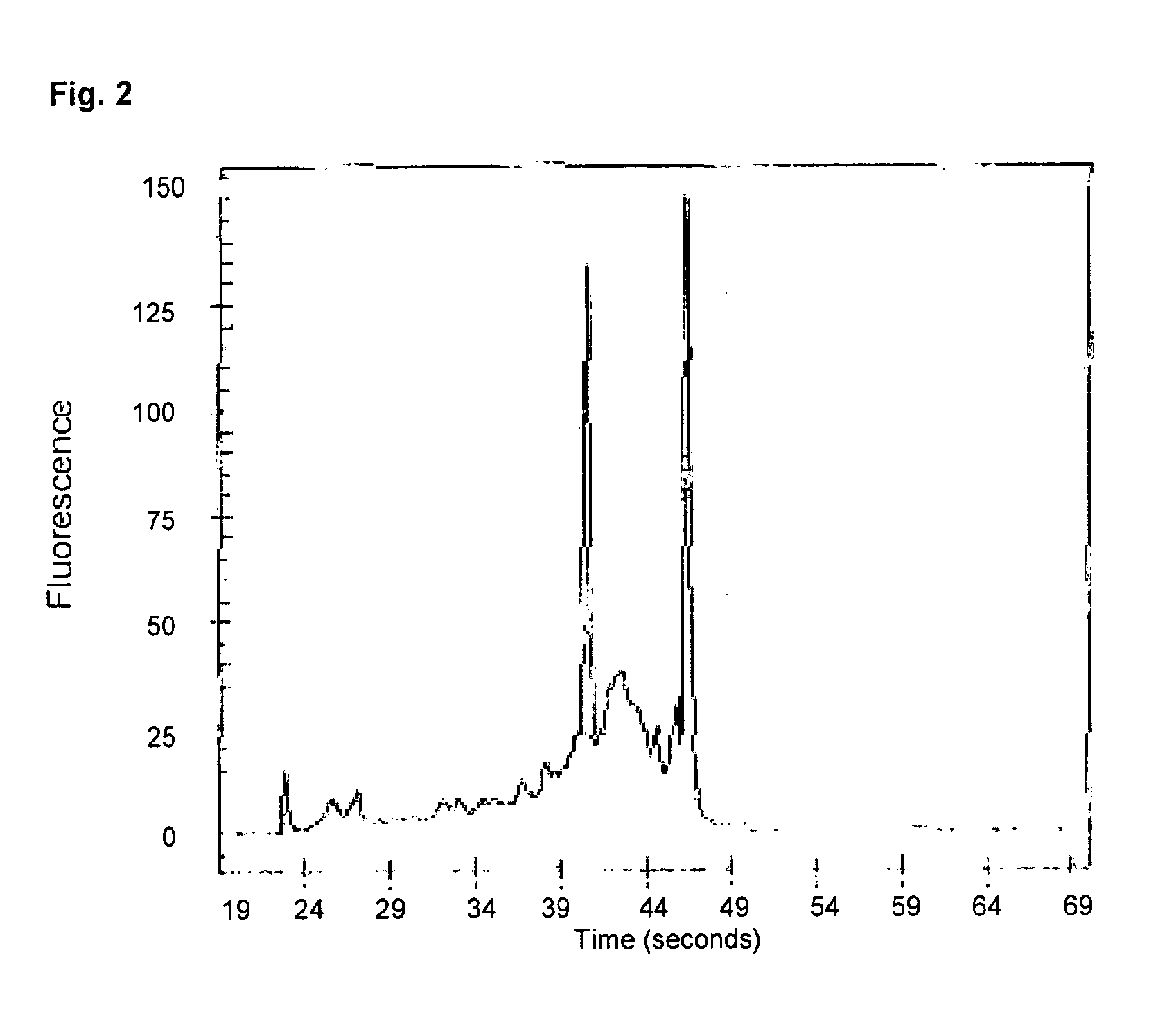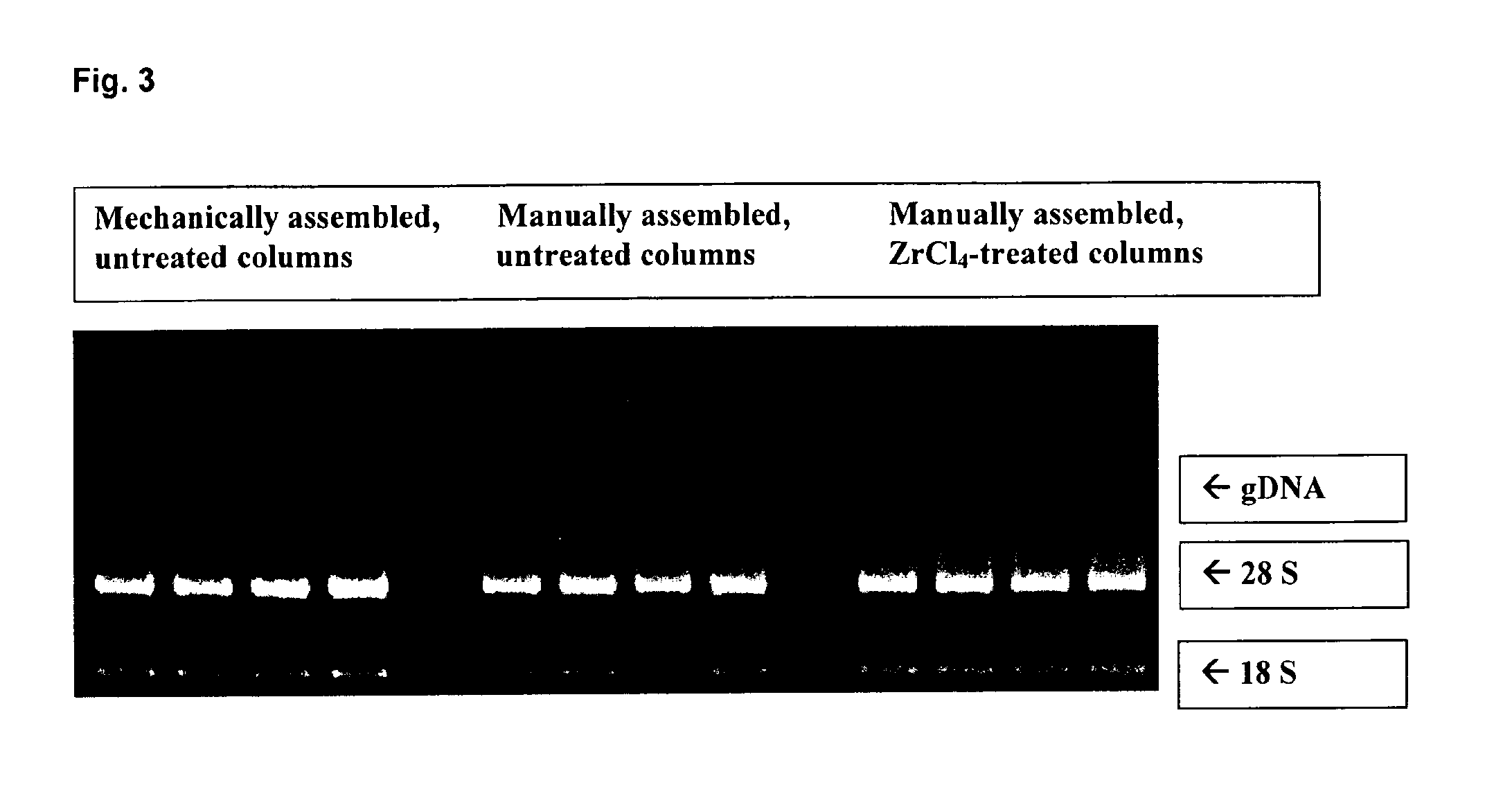Methods and kit for isolating nucleic acids
a nucleic acid and kit technology, applied in the field of methods and kits for isolating nucleic acids, can solve the problems of increasing the risk of contamination, reducing reducing so as to reduce the yield of rna, prolong the length of process time, and increase the overall cost of rna isolation
- Summary
- Abstract
- Description
- Claims
- Application Information
AI Technical Summary
Problems solved by technology
Method used
Image
Examples
example 1
[0101]Single membrane samples having a diameter of 7,5 mm where punched out of a role of silica membrane of the kind that is usually used in the commercially available RNeasy kit. Said silica membrane thus constitutes a nucleic acid binding matrix usually employed for isolating RNA. Said membrane samples were incubated for four hours at room temperature in a titanium (IV)-chloride solution (5%) in tetrahydrofuran (THF) (Merck, Darmstadt). The membrane samples were placed on a filter and were washed five times in water before they were dried for 20 hours at 40° C. in a drying chamber. The respectively treated / coated membrane samples were placed by hand as quires in an RNeasy column structure comprising a frit and a tension ring. Untreated membranes were also placed in an RNeasy column comprising a frit and a tension ring and used as a control.
[0102]Total RNA was isolated by using these columns from 10 mg rat kidney by using the RNeasy-protocol (Qiagen, Hilden). Photometric determinat...
example 2
[0105]The treatment of the silica membrane was similarly performed as described in example 1. However, in contrast a zirconium chloride solution (1%) in THF was used instead of a titanium (IV) chloride solution. A comparative RNA isolation and purification was performed after assembling the membranes pre-treated according to the teaching of the present invention in an RNeasy column. Untreated columns were used as a control, which were either assembled by hand or mechanically.
[0106]106 HeLa cells were used as RNA source. Isolation was again performed according to the well established RNeasy protocol. The photometric determination of the total nucleic acid yield gave for mechanically produced untreated RNeasy columns approximately 275 μg, approximately 240 μg for the untreated reference columns, which were assembled by hand and approximately 190 μg for the columns comprising a nucleic acid binding matrix which was pre-treated with zirconium chloride.
[0107]8 μl of the eluates were appl...
example 3
[0109]The three column types described in example 2 were also used in order to isolate total RNA from 106 Jurkat cells (which is a cell line derive from human T-cell leukaemia). Isolation was again performed according to the standard RNeasy-protocol (Qiagen, Hilden). 5 ng of the total nucleic acid obtained after isolation was used in a quantitative RT-PCR (reverse transcription PCR) for determining the overall nucleic acid concentration (thus RNA and DNA). Furthermore, a quantitative PCR was performed in order to be able to determine the concentration of genomic DNA in the probe. During a quantitative PCR no RNA is amplified / detected as the reverse transcription step (leading to cDNA which can be amplified by PCR) is missing. Taqman beta-Actin Control Reagents (Applied Biosystem, Foster City) were used as primers and probes. Afterwards, the Ct-value was determined for each reaction. The Ct-value (threshold cycle) describes the amplification cycle of the reaction, wherein the fluores...
PUM
| Property | Measurement | Unit |
|---|---|---|
| diameter | aaaaa | aaaaa |
| diameter | aaaaa | aaaaa |
| hydrophobic | aaaaa | aaaaa |
Abstract
Description
Claims
Application Information
 Login to View More
Login to View More - R&D
- Intellectual Property
- Life Sciences
- Materials
- Tech Scout
- Unparalleled Data Quality
- Higher Quality Content
- 60% Fewer Hallucinations
Browse by: Latest US Patents, China's latest patents, Technical Efficacy Thesaurus, Application Domain, Technology Topic, Popular Technical Reports.
© 2025 PatSnap. All rights reserved.Legal|Privacy policy|Modern Slavery Act Transparency Statement|Sitemap|About US| Contact US: help@patsnap.com



